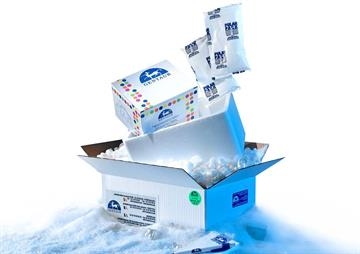TGFB1 Chemi-Luminescent ELISA Kit (Human) (OKCD03945)

TGFB1 Chemi-Luminescent ELISA Kit (Human) (OKCD03945)
1935.4 EUR
In Stock
quantity
Produktdetaljer
Katalognummer: 247 - OKCD03945
Produktkategori: Företag och industri > Vetenskap och laboratorium
Aviva Systems BiologyGentaur
Storlek: 96 Wells
Related Products
OKCD03945
TGFB1 Chemi-Luminescent ELISA Kit (Human) (OKCD03945)
Description of target: Multifunctional protein that controls proliferation, differentiation and other functions in many cell types. Many cells synthesize TGFB1 and have specific receptors for it. It positively and negatively regulates many other growth factors. It plays an important role in bone remodeling as it is a potent stimulator of osteoblastic bone formation, causing chemotaxis, proliferation and differentiation in committed osteoblasts . Stimulates sustained production of collagen through the activation of CREB3L1 by regulated intramembrane proteolysis (RIP) . Can promote either T-helper 17 cells (Th17) or regulatory T-cells (Treg) lineage differentiation in a concentration-dependent manner. At high concentrations, leads to FOXP3-mediated suppression of RORC and down-regulation of IL-17 expression, favoring Treg cell development. At low concentrations in concert with IL-6 and IL-21, leads to expression of the IL-17 and IL-23 receptors, favoring differentiation to Th17 cells. Mediates SMAD2/3 activation by inducing its phosphorylation and subsequent translocation to the nucleus . Can induce epithelial-to-mesenchymal transition (EMT) and cell migration in various cell types .;Species reactivity: Human;Application: ;Assay info: Assay Methodology: Quantitative Sandwich ELISA;Sensitivity: 2.74 pg/mL
1935.4 €
OKCD03914
KIT Chemi-Luminescent ELISA Kit (Human) (OKCD03914)
Description of target: Tyrosine-protein kinase that acts as cell-surface receptor for the cytokine KITLG/SCF and plays an essential role in the regulation of cell survival and proliferation, hematopoiesis, stem cell maintenance, gametogenesis, mast cell development, migration and function, and in melanogenesis. In response to KITLG/SCF binding, KIT can activate several signaling pathways. Phosphorylates PIK3R1, PLCG1, SH2B2/APS and CBL. Activates the AKT1 signaling pathway by phosphorylation of PIK3R1, the regulatory subunit of phosphatidylinositol 3-kinase. Activated KIT also transmits signals via GRB2 and activation of RAS, RAF1 and the MAP kinases MAPK1/ERK2 and/or MAPK3/ERK1. Promotes activation of STAT family members STAT1, STAT3, STAT5A and STAT5B. Activation of PLCG1 leads to the production of the cellular signaling molecules diacylglycerol and inositol 1,4,5-trisphosphate. KIT signaling is modulated by protein phosphatases, and by rapid internalization and degradation of the receptor. Activated KIT promotes phosphorylation of the protein phosphatases PTPN6/SHP-1 and PTPRU, and of the transcription factors STAT1, STAT3, STAT5A and STAT5B. Promotes phosphorylation of PIK3R1, CBL, CRK (isoform Crk-II), LYN, MAPK1/ERK2 and/or MAPK3/ERK1, PLCG1, SRC and SHC1.1;Species reactivity: Human;Application: ;Assay info: Assay Methodology: Quantitative Sandwich ELISA;Sensitivity: 0.0412 ng/mL
1935.4 €
OKCD03377
CMTM6 Chemi-Luminescent ELISA Kit (Human) (OKCD03377)
Description of target: ;Species reactivity: Human;Application: ;Assay info: Assay Methodology: Quantitative Sandwich ELISA;Sensitivity: 6.9 pg/mL
1935.4 €
OKCD03379
CLCF1 Chemi-Luminescent ELISA Kit (Human) (OKCD03379)
Description of target: Cytokine with B-cell stimulating capability. Binds to and activates the ILST/gp130 receptor.;Species reactivity: Human;Application: ;Assay info: Assay Methodology: Quantitative Sandwich ELISA;Sensitivity: 5.5 pg/mL
1935.4 €
OKCD03382
CNTF Chemi-Luminescent ELISA Kit (Human) (OKCD03382)
Description of target: CNTF is a survival factor for various neuronal cell types. Seems to prevent the degeneration of motor axons after axotomy. ;Species reactivity: Human;Application: ;Assay info: Assay Methodology: Quantitative Sandwich ELISA;Sensitivity: 62.5 pg/mL









